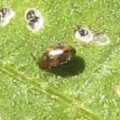Easy to grow & drought tolerant
Botanical Information
Taxonomy
Beta vulgaris
History
Physical Description
- taprooted
Varieties & Cultivars
Categories or Types of Chard
Colors Available
- Red
- yellow
- pink
- purple
- white
- orange
Varieties to Grow
Growth Requirements
Climate & Temperature Requirements
Air Temperature
Soil Temperature
Humidity
Day Length or Light Requirements
Site Conditions Favored
Soil Requirements
Soil Texture
- well-prepared with good drainage to allow roots to go deep
pH
Nutrient Requirements
- add compost
Propagation
Methods of propagation
Seed
- taproot doesn’t like to be disturbed, so if starting indoors, transplant promptly – or just direct-sow
- 5-14 days to germination
Division
Cuttings
Transplanting or Potting Up
- transplant promptly and carefully to not disturb the taproot
Seed Saving
Planting Out
plant out from April to mid-July
Bed Prep & Soil Amendments
Bed Spacing
Row Spacing
Planting Depth
- 1/2″
Alternative Bed Methods
- Biointensive spacing: 8″
Container Gardening
Routine Cultivation & Maintenance
Water Requirements
Fertilization Recommendations
Mulching & Weeding
Pinching or Pruning & Dividing
Support
Winterizing
Companion Planting
Helpful Companions
Harmful Companions
Companion to..
Pests, Diseases & Problems
Common Pests
Common Diseases
Symptoms
Whole Plant
Leaves
Stem/Trunk
Flowers
Fruit
Roots
Harvesting & Storage
Edible Parts of the Plant
Yield
- 200-810 lbs per 100 sq ft
Days to Harvest / Harvest Timing
- harvest for baby greens at any time
- harvest for cooking when 10″ tall
Harvest Methods
- harvest outer leaves for baby greens
- cut plant 2″ from soil to allow regrowth
Storage of harvest
Fresh
Canned
Frozen
Pickled
Dried
Cooking
Nutritional Benefits & Values
Toxicity
Cooking
Preparation
Cooking Methods
Recipes (link to …/category/recipes/tag/Chard)
Resources
Information for this article was taken from these sources. (link to …/category/resources/tag/Chard)


